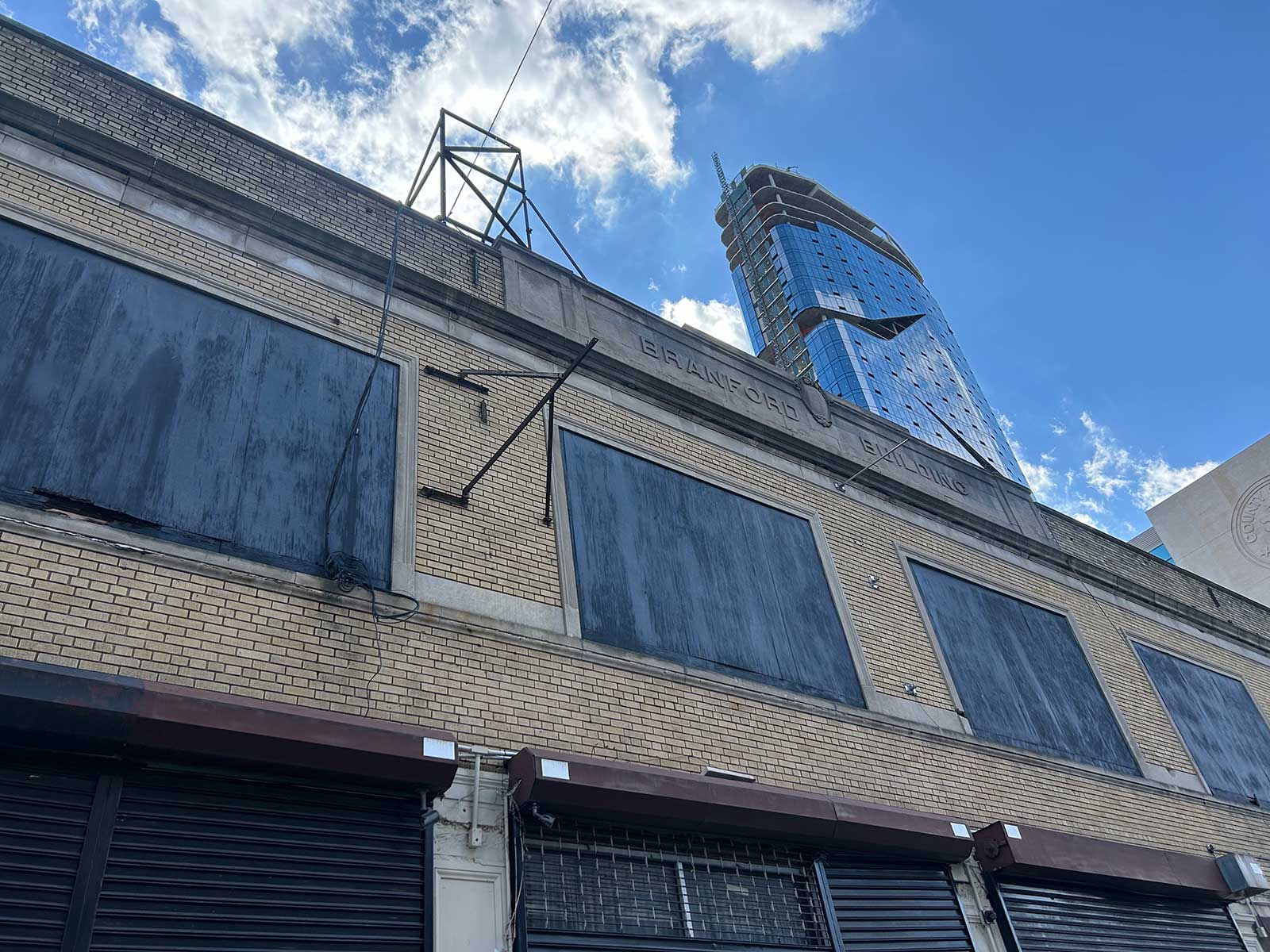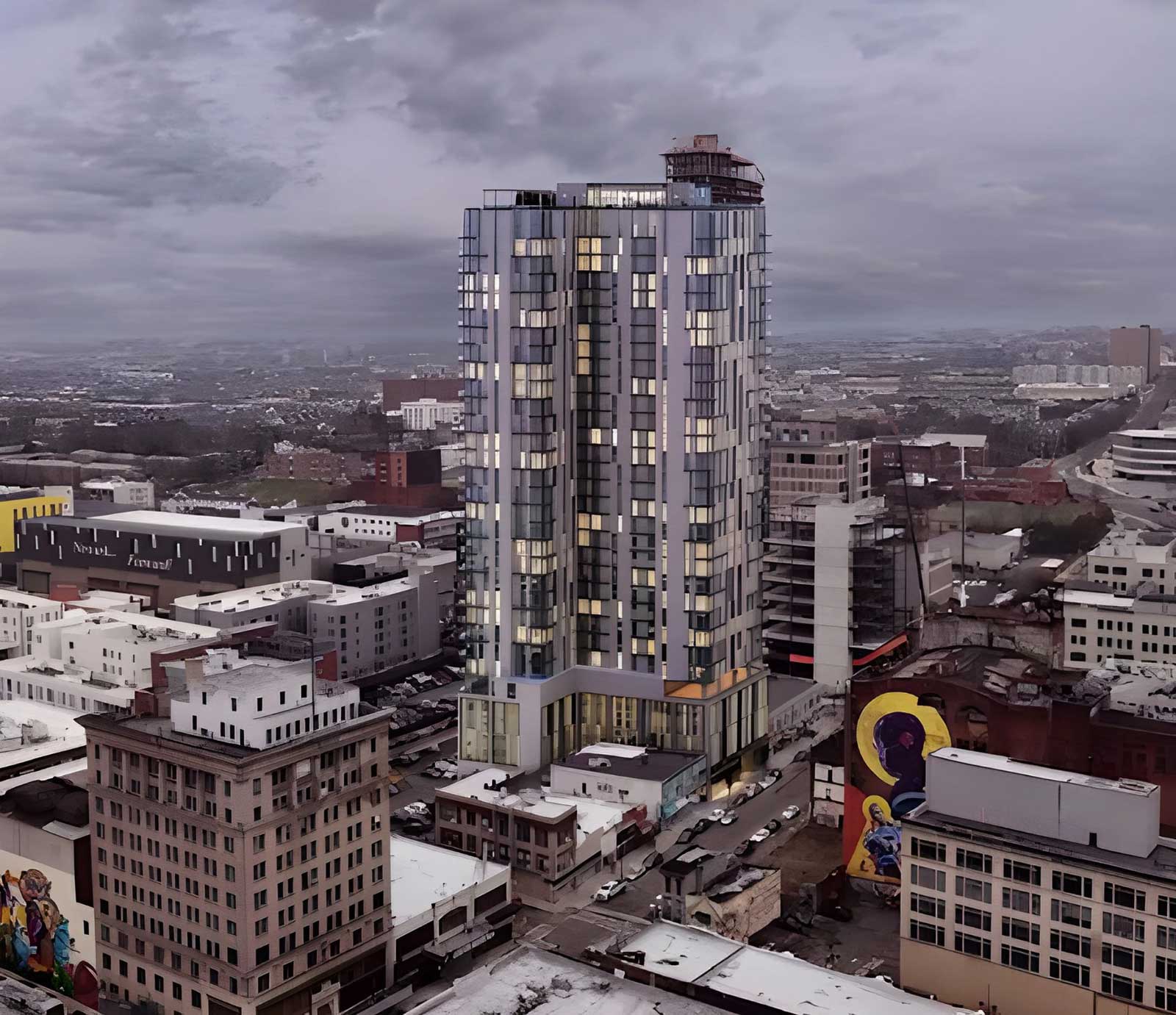
Ever since the controversial shakeup of Newark’s Landmarks Commission, local preservationists have been waiting to see how the new chair, Anthony Smith, would approach this leadership role and under what circumstances he would allow demolitions of historic buildings.
This month, the first demolition application was heard. In the end, the commission approved the developer’s request to demolish the existing two-story masonry building at 52 Branford Place and replace it with a 32-story high-rise tower.

Richard Grossklaus, a longtime commissioner, admitted being “torn” about this project, but nevertheless voted for demolition.
“If you can do something with it, maybe we should save it,” Grossklaus said. “Otherwise, in my opinion, it would be better to have the new building with suggestions of architecture that was there built into the new structure.”
The project engineer, Jeff Ling, claimed that roof leaks had caused significant deterioration in the structure’s stability. The building, Ling said, could be saved, but it would require a “financial burden.” It was this testimony that tilted the commission toward approving the demolition.

However, there were points of concern regarding this decision. When Commissioner Myles Zhang asked if the facade could be saved, the engineer said he didn’t study that possibility.
Instead, Smith requested that elements of the original building be recycled into the facade of the new building. The developer only committed to using a pre-cast limestone ornament that bears the building’s name, “The Branford Building.”
“It’s a wonderful piece of history,” said Russell DeRosa, founding principal of his namesake architecture firm, about the carved detail. “The way we designed the building, we can certainly incorporate it.”
The project engineer, Jeff Ling, also admitted that one reason the existing building couldn’t be saved is that they would need extra pillars to reinforce the ground floor to support additional stories – this, in turn, would make it difficult to put a parking garage there.
Typically, in a historic district, the criterion for preserving a building is whether it can be saved, not whether it can support additional stories on top of it or whether the historic building can be converted into a parking garage.
Different commissions have different approaches to demolition. In Montclair, a homeowner’s claim that renovating a historic Tudor at 109 Union Street would have been too costly led to a drawn-out saga that eventually became a lawsuit, which was later dropped.
Throughout the battle, the town’s Historic Preservation Commission never budged, believing that the cost of renovations should not be a factor in deciding whether to demolish. In the end, the homeowner relented and renovated the home, a project that was completed this year. Certainly, the Montclair HPC would point to the result as the reason why they hold such a strict stance, because in the end it preserves historic buildings.
There are two ways of looking at the demolition of 52 Branford Place. One is that this particular building is not a “contributing” building to the historic district, meaning it doesn’t rise to the same architectural significance as other landmarks. Some would argue that the commission is right in not holding back the developer. In this case, the tower that the Derosa Group has designed for the site is well-designed with a terracotta facade, unusual when glass exteriors prevail these days.
But there is another way of looking at this: Very few historic buildings remain on Branford Place and those that do are in poor shape. The building across the street has broken plywood covering the windows, with some windows exposed completely to the elements. Will it be the next in line for demolition?
This western edge of the Four Corners Historic District has seen a rash of demolition approvals. Six buildings will soon be torn down and replaced with the RBH Group’s 13-story Millenium Project. The Metropolitan Building, built in 1895, was demolished last year to make way for a 18-story tower.
If the long-term goal is saving this historic district, perhaps the buildings that can be saved should be saved – no matter the cost.


